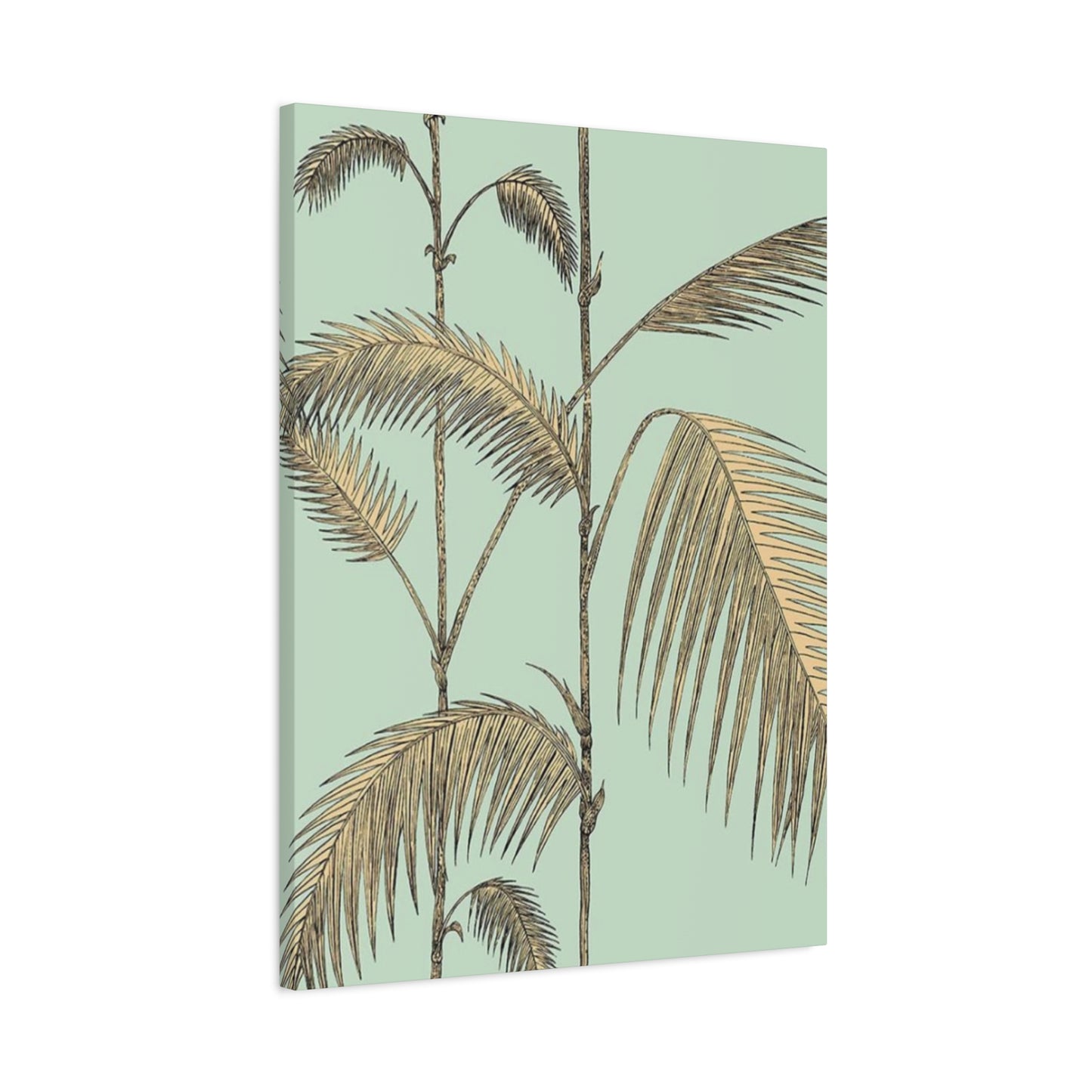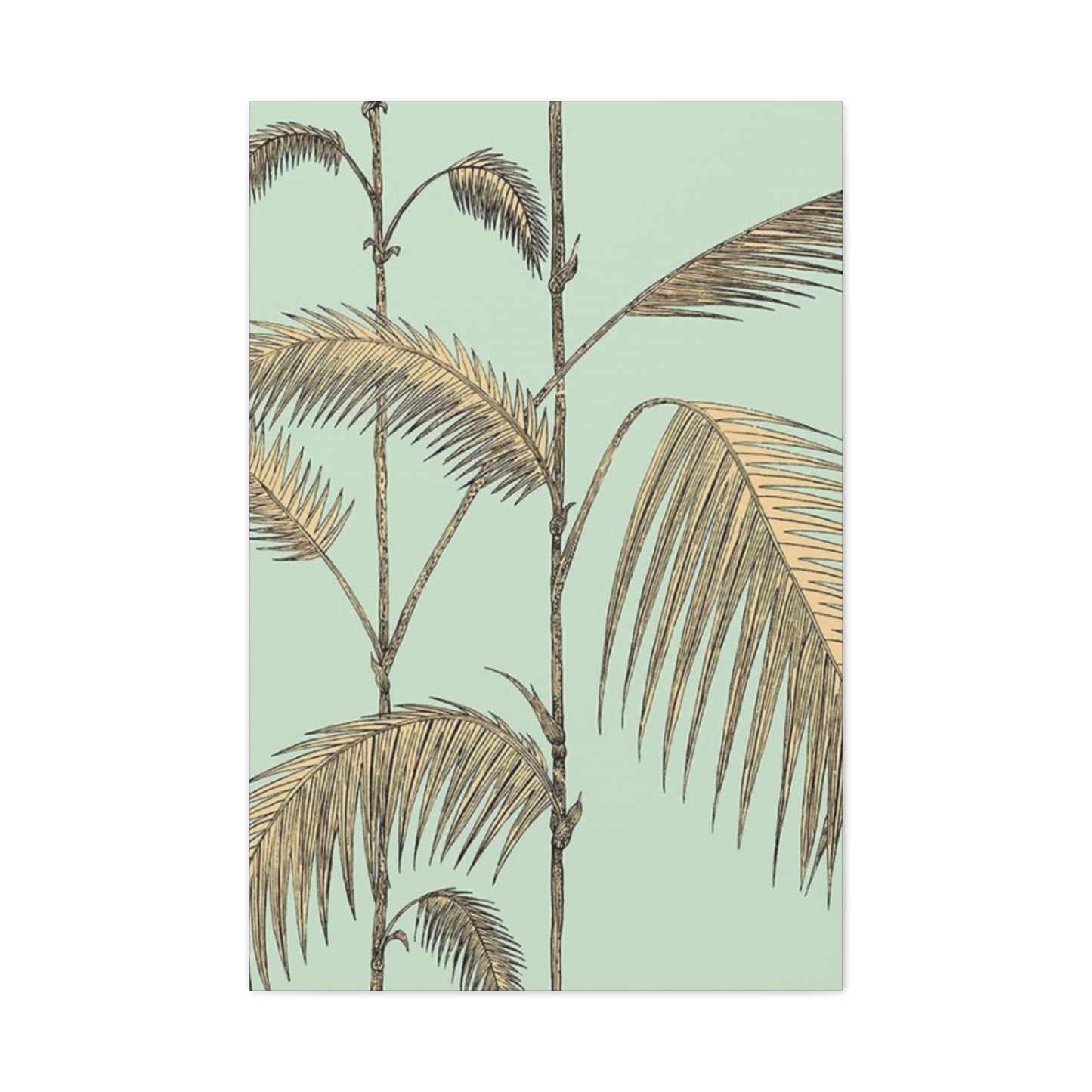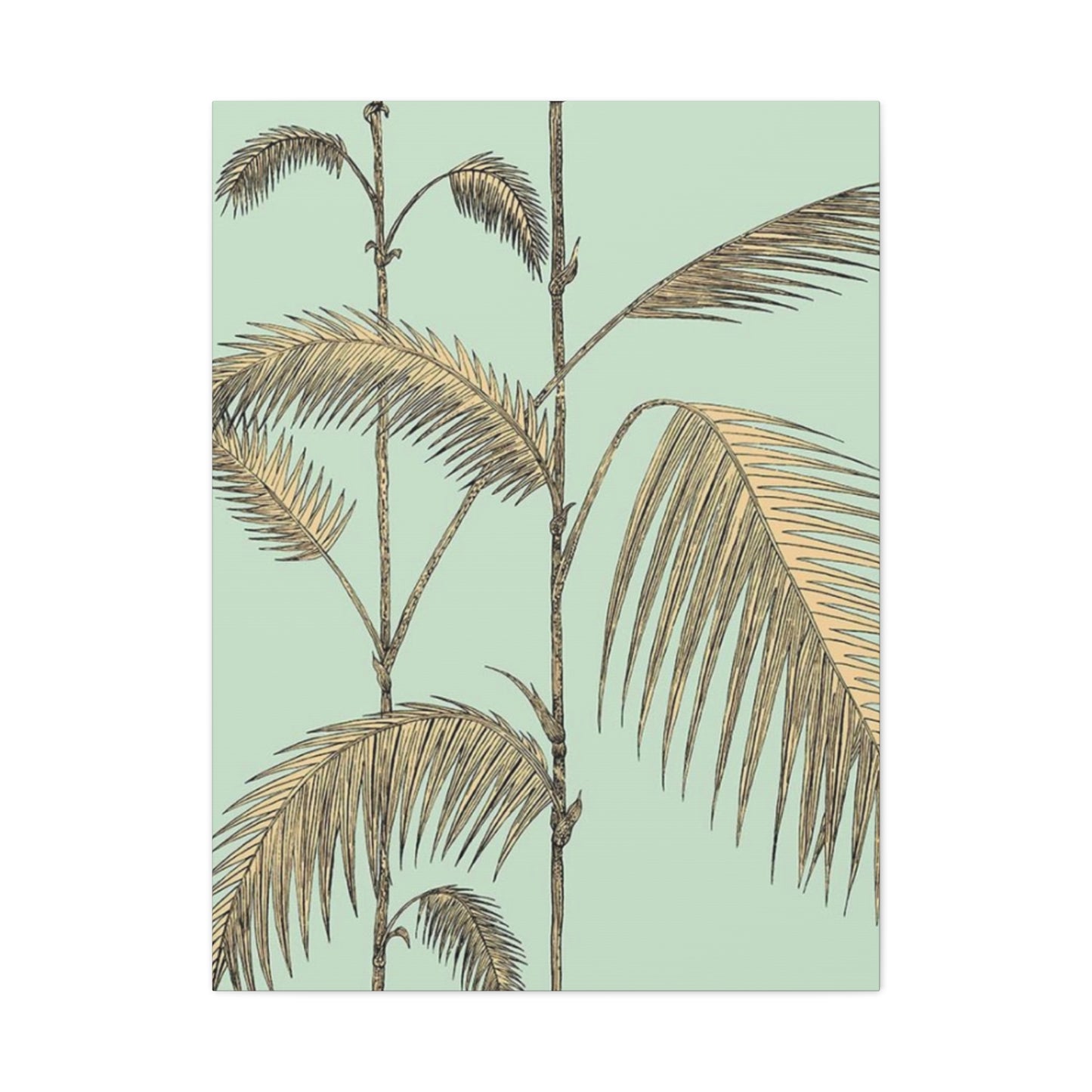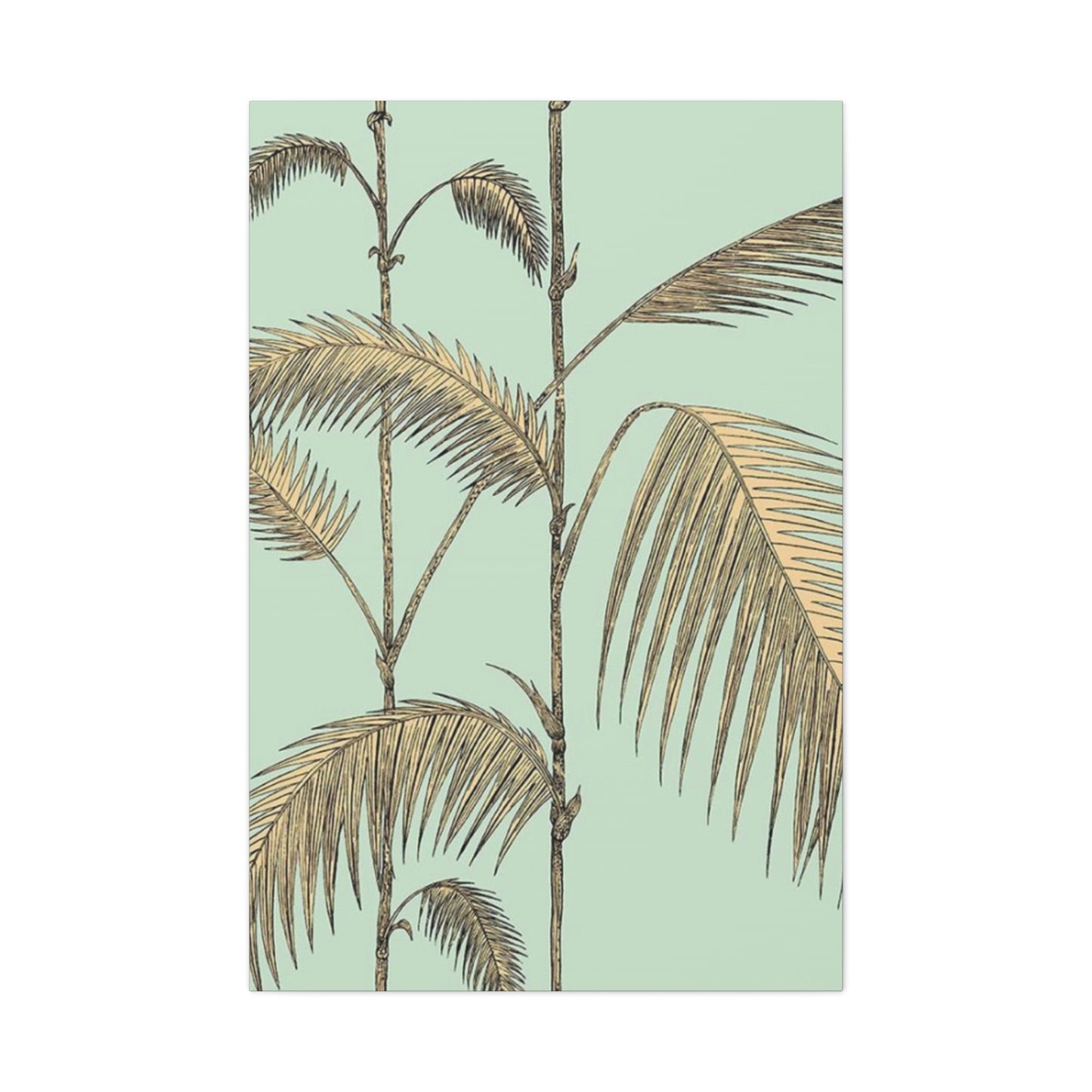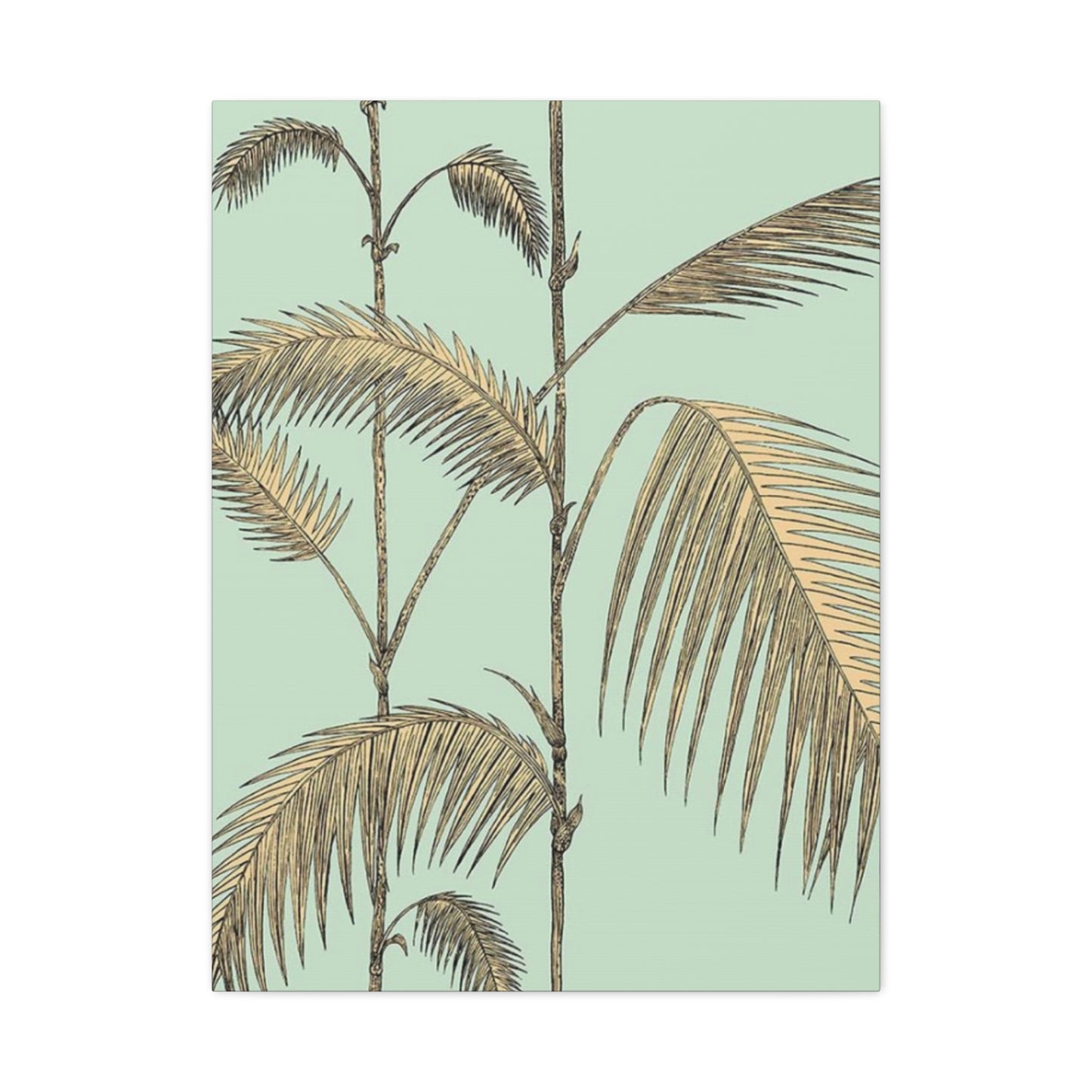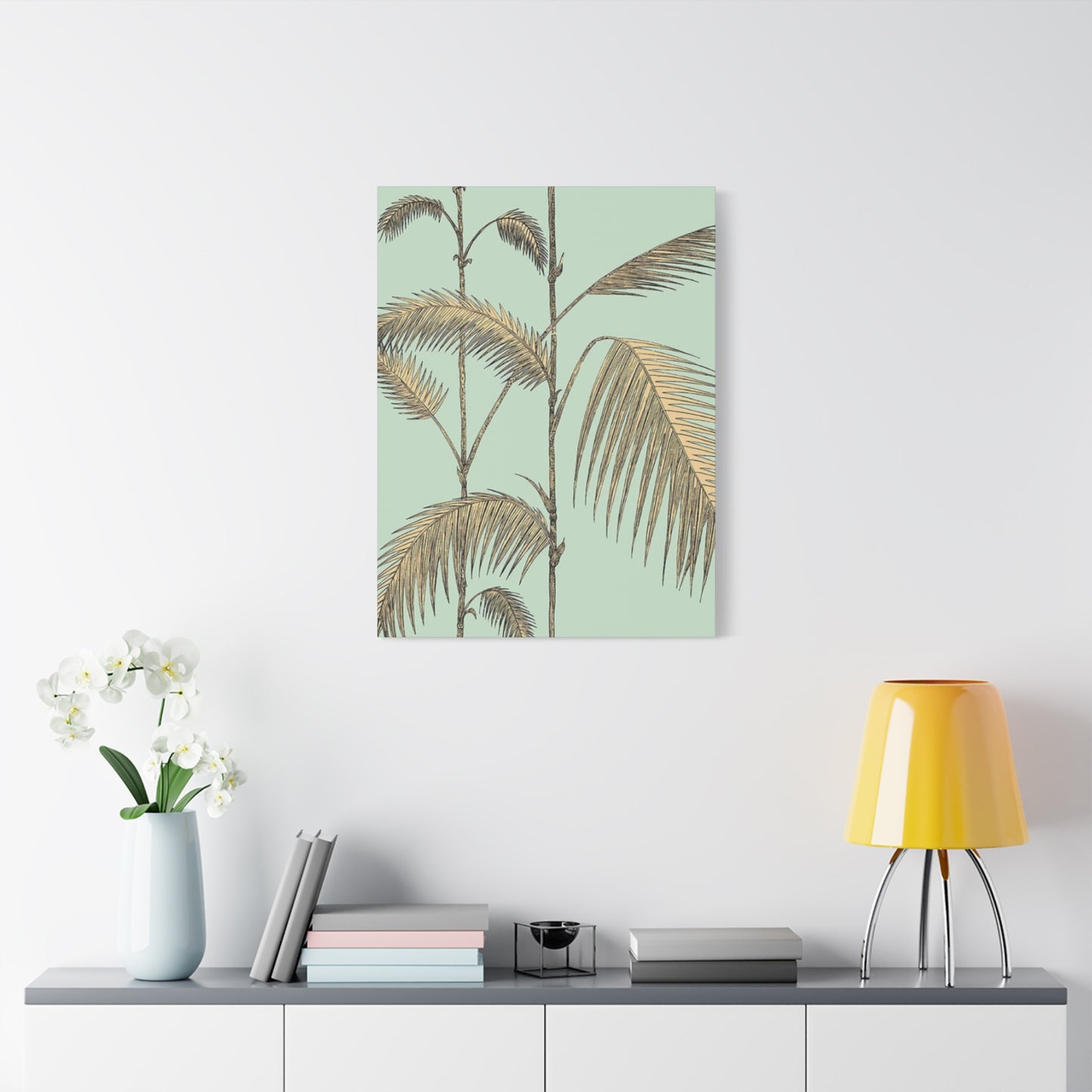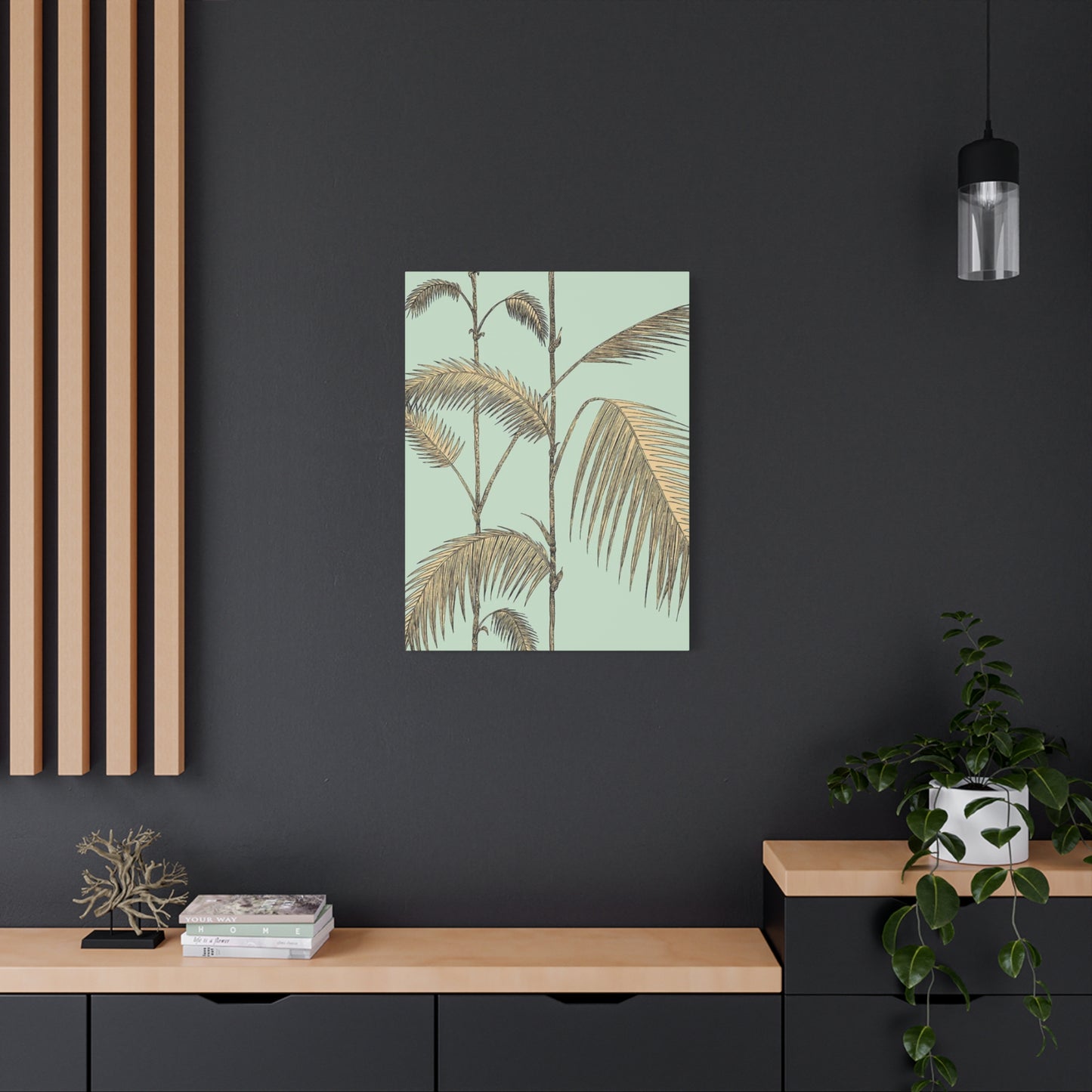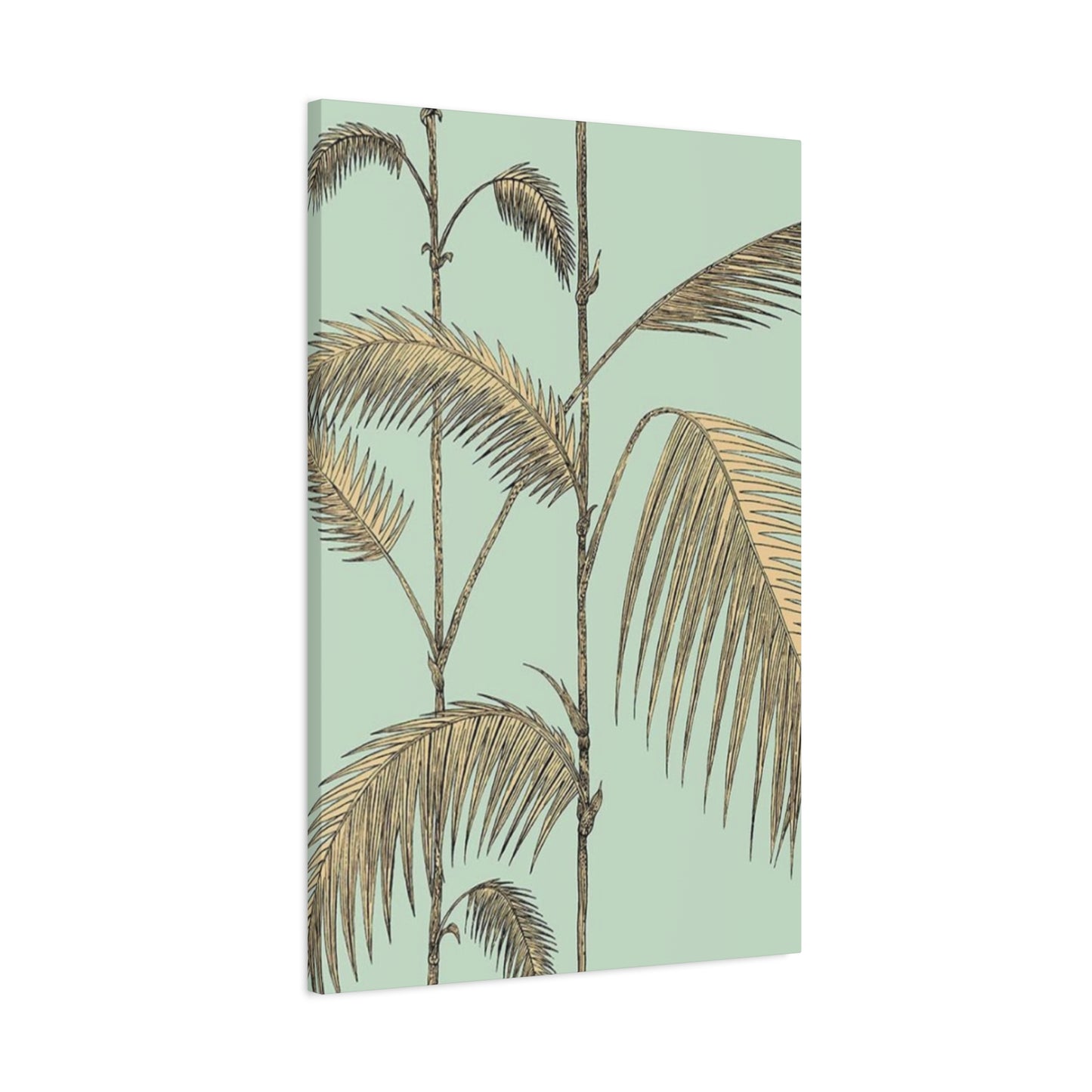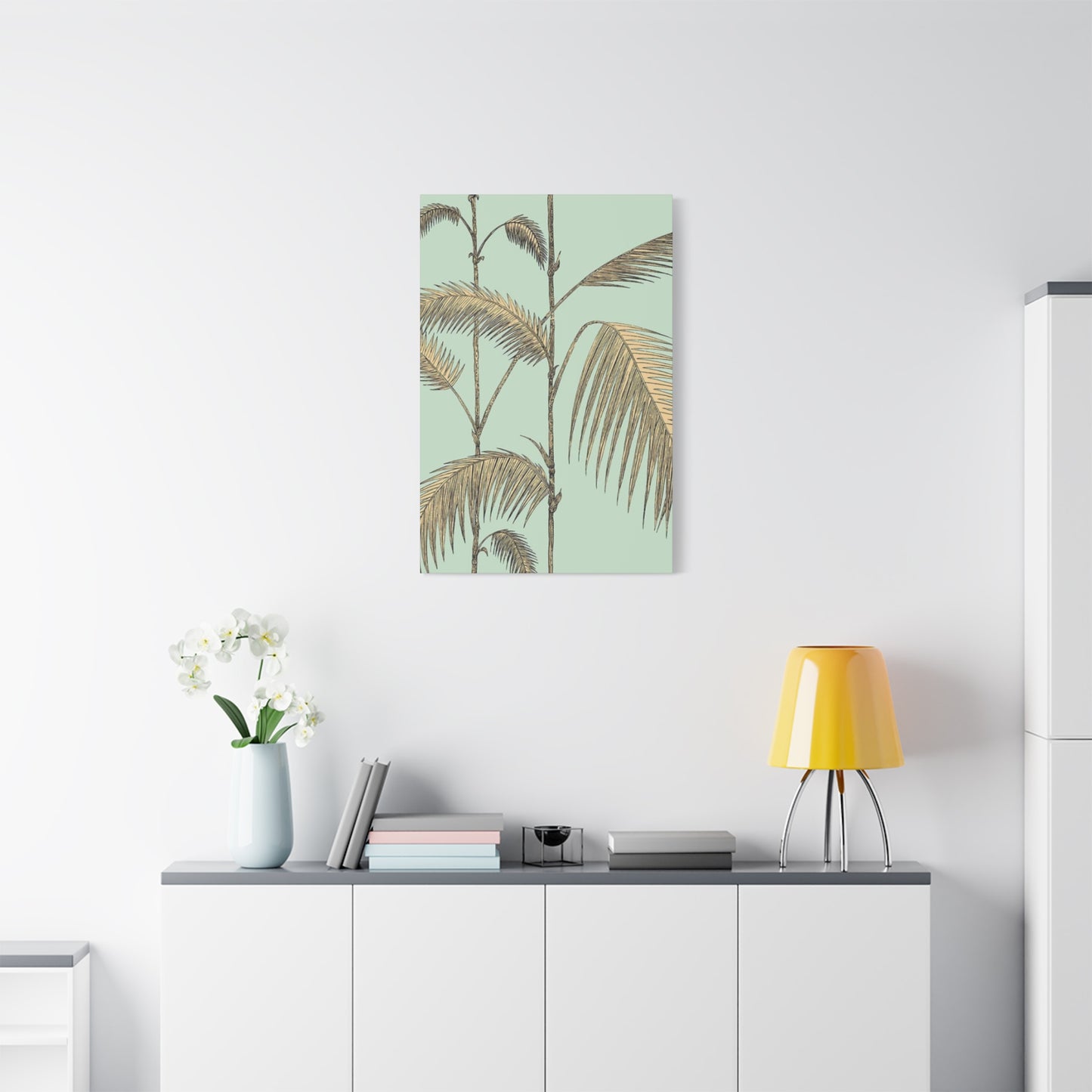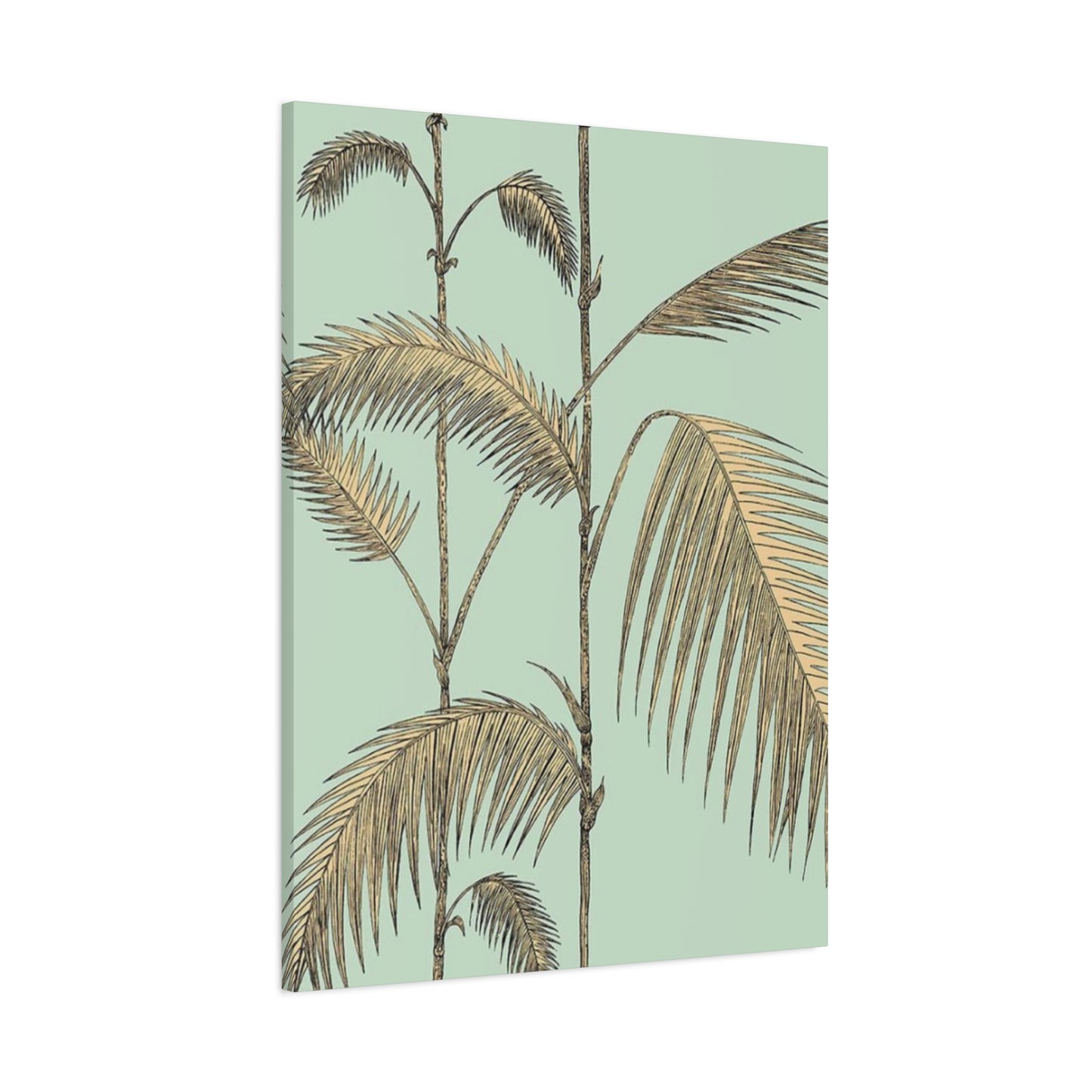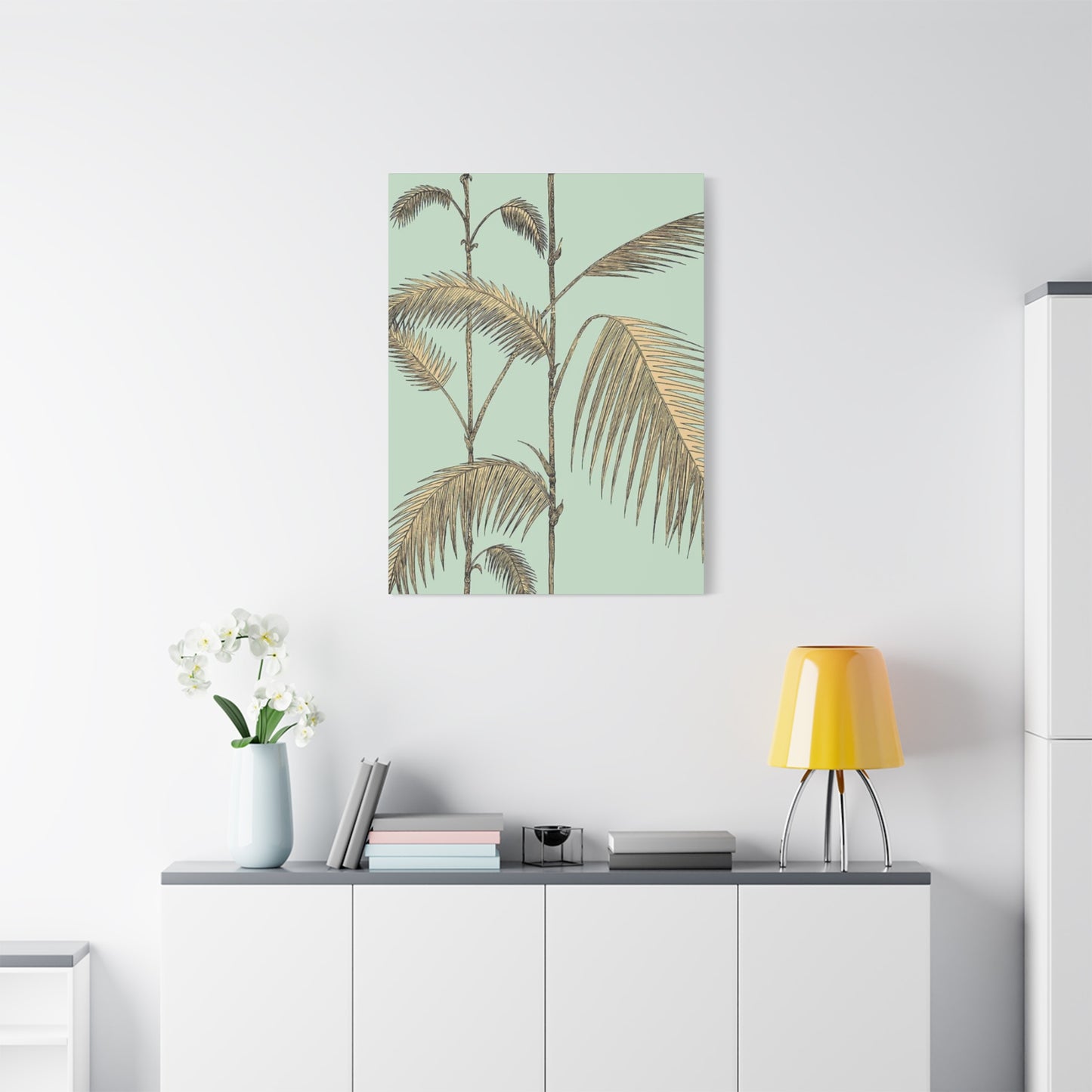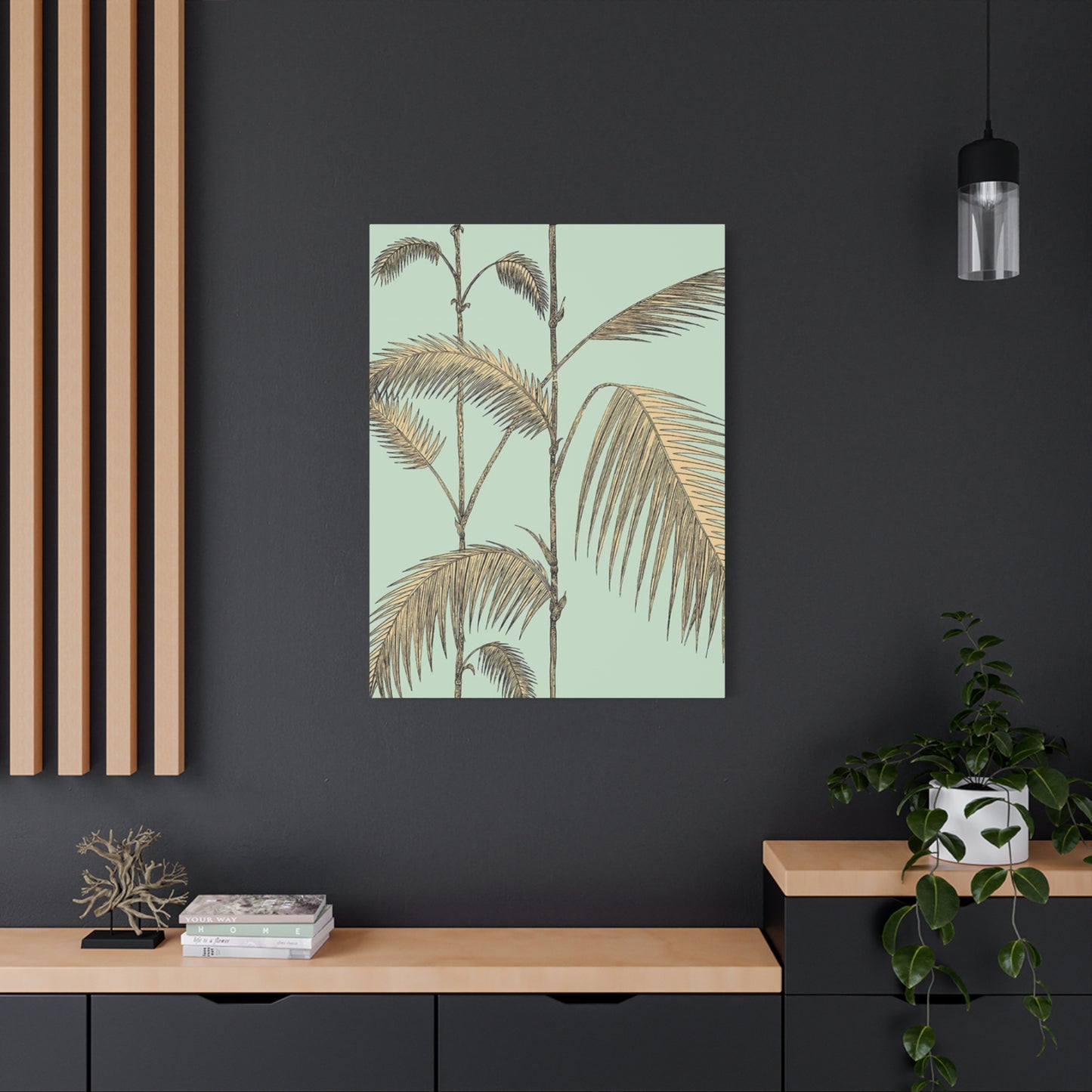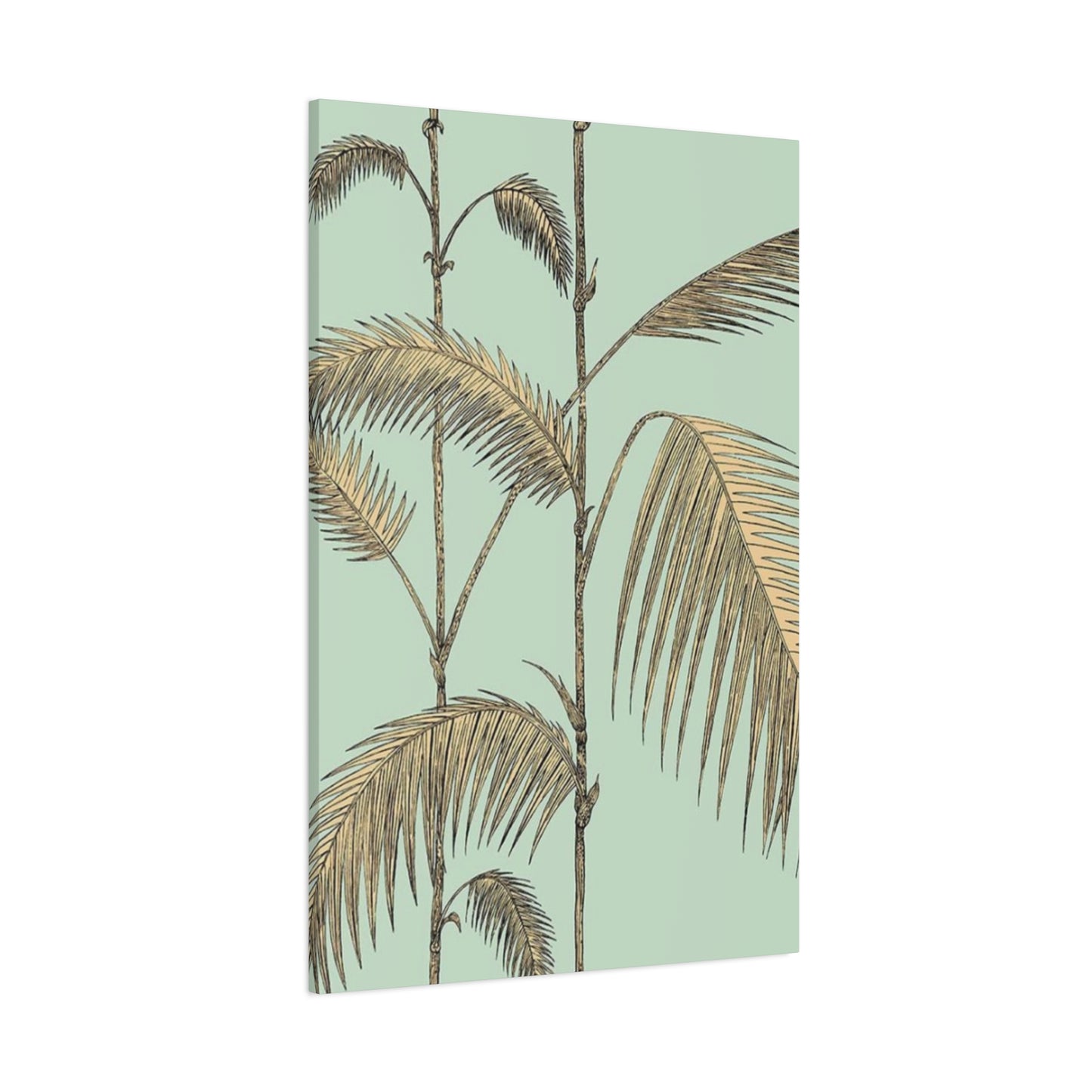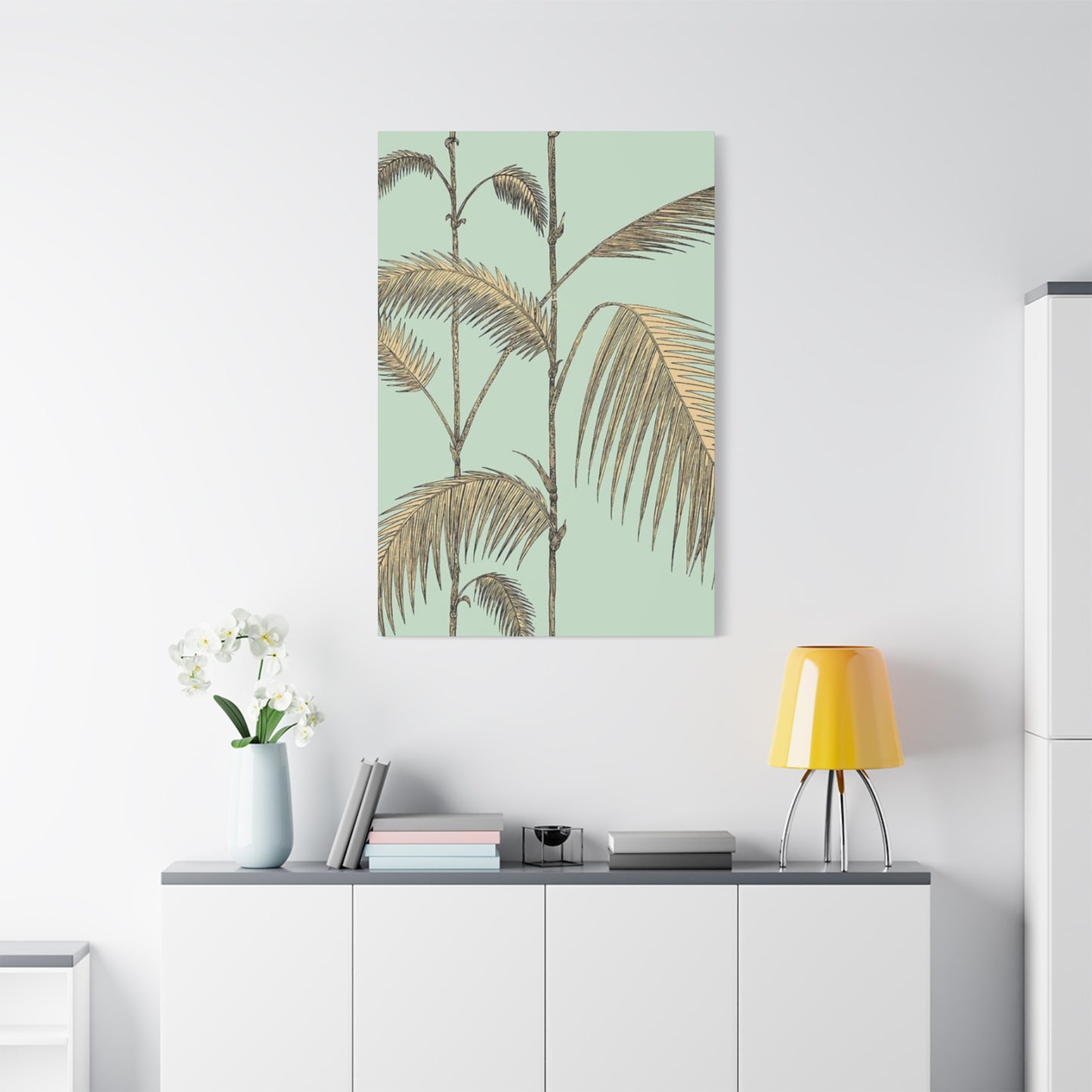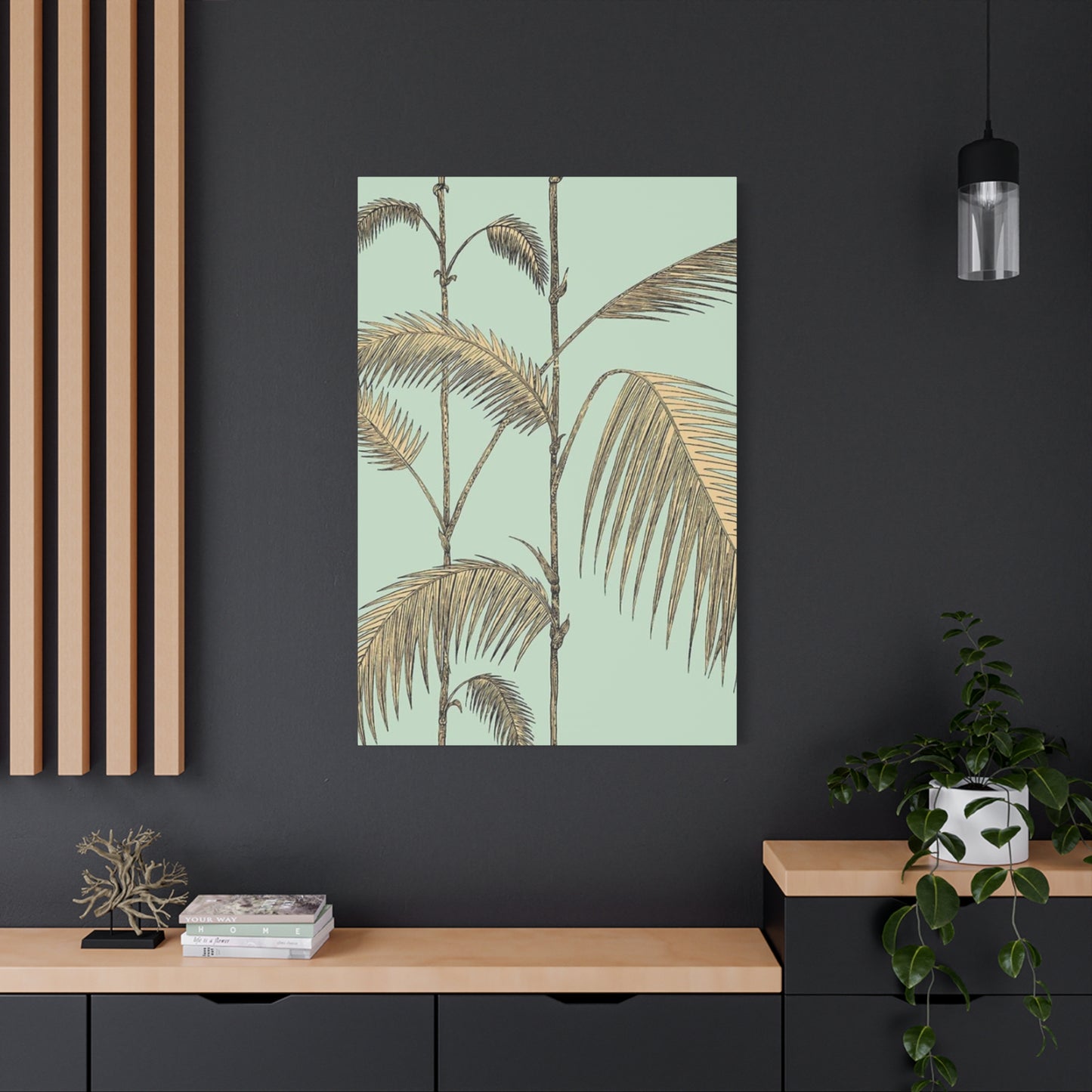Organic Sophistication: Brown Leaves Close-Up Wall art Prints for Minimalist Design
The growing fascination with nature-inspired interior design has led homeowners and decorators to embrace botanical elements that bring warmth and tranquility into living spaces. Among these natural treasures, brown palm leaf wall art has emerged as a sophisticated choice for those seeking to create environments that feel both grounded and aesthetically refined. This artistic medium captures the essence of tropical beauty while offering versatility that complements various design philosophies from contemporary minimalism to rustic charm.
The appeal of incorporating palm tree leaf imagery into home decor extends beyond mere aesthetics. These pieces serve as constant reminders of nature's intricate patterns and the peaceful ambiance associated with tropical landscapes. Whether displayed in living rooms, bedrooms, meditation spaces, or professional environments, brown palm leaf artwork creates focal points that draw the eye while maintaining a sense of calm sophistication.
Detailed Examination of Palm Leaf Imagery in Interior Design
The intricate structure of palm leaves provides endless fascination for both photographers and art enthusiasts. Each frond contains countless details that become apparent upon closer inspection, from the delicate veining that runs through each segment to the subtle variations in coloration that occur naturally as the leaf matures. When captured through the lens of a skilled photographer, these details transform into captivating visual narratives that speak to the complexity and beauty inherent in the natural world.
Brown-toned palm leaf imagery holds particular appeal because it represents a departure from the bright greens typically associated with tropical foliage. The warmer hues suggest maturity, earthiness, and a connection to the changing seasons. This color palette makes such artwork particularly adaptable to various interior design schemes, as brown tones naturally complement a wide range of color families including neutrals, warm earth tones, and even cooler shades when seeking contrast.
The texture visible in quality palm leaf photography adds another dimension to these pieces. The rough, fibrous quality of palm fronds translates beautifully to canvas or framed prints, creating tactile interest even in two-dimensional representations. This textural quality helps artwork feel more substantial and grounded within a space, contributing to the overall sense of natural authenticity that many homeowners seek in their decor choices.
Botanical Wall Art Featuring Palm Leaves
Botanical wall art has experienced a renaissance in recent years, with plant-focused imagery becoming increasingly popular across diverse interior design styles. Within this broader category, palm leaf artwork occupies a special niche that balances exotic appeal with accessible elegance. Unlike some botanical subjects that may feel overly delicate or precious, palm leaves project strength and resilience while maintaining undeniable beauty.
The botanical accuracy of palm leaf artwork appeals to nature enthusiasts and those with interests in plant biology. Each piece becomes not just decoration but also a celebration of plant life and the incredible diversity found in tropical ecosystems. For educational environments or homes where learning is valued, these pieces can spark curiosity about plant structures, photosynthesis, and the ecological importance of palm species in their native habitats.
When selecting botanical wall art featuring palm leaves, consideration should be given to the specific species represented. Different palm varieties display distinct leaf patterns, from the fan-shaped fronds of certain species to the pinnate, feather-like leaves of others. This diversity allows collectors to curate selections that showcase the remarkable variety within the palm family, creating gallery walls that educate while they beautify.
Creating Earthy Interiors with Palm Leaf Photography
The concept of earthy interiors revolves around bringing natural elements and organic materials into living spaces to create environments that feel grounded, peaceful, and connected to the natural world. Brown palm leaf photography serves as an ideal component in this design approach, offering visual interest that aligns perfectly with earth-inspired aesthetics.
Earthy color palettes typically incorporate browns, tans, terracotta, sage greens, and muted ochres. The warm brown tones present in mature palm leaf imagery integrate seamlessly into these schemes, acting as either complementary elements or focal points depending on placement and surrounding decor. The organic shapes of palm fronds also reinforce the natural theme, their curved lines and irregular patterns providing relief from the straight edges and geometric forms common in modern architecture and furniture.
Layering different textures is essential when creating truly earthy interiors, and wall art plays a crucial role in this layering process. A textured palm leaf canvas print can add visual depth to a room featuring natural fiber rugs, linen upholstery, wooden furniture, and stone or ceramic accessories. Each element contributes to an overall sensory experience that feels cohesive and intentionally designed around natural materials and imagery.
The psychological impact of earthy interiors should not be underestimated. Environments that incorporate natural elements and color schemes have been shown to reduce stress levels, promote relaxation, and even improve cognitive function. By selecting wall art that reinforces these natural connections, homeowners create spaces that support wellbeing alongside aesthetic goals.
Detailed Canvas Art Showcasing Palm Leaves
Canvas prints offer particular advantages for displaying palm leaf imagery. The texture of canvas material complements the organic subject matter, creating harmony between medium and message. High-quality canvas prints can reproduce the subtle color variations and fine details present in original photographs, ensuring that the intricate beauty of palm leaf structures remains visible even from close viewing distances.
The durability of canvas makes it an excellent choice for various environments, from humid bathrooms where tropical themes feel especially appropriate to high-traffic areas where artwork needs to withstand daily life. Modern printing techniques have made canvas prints increasingly affordable while maintaining quality standards that rival traditional framed prints, democratizing access to museum-quality botanical artwork.
When evaluating canvas art options, attention should be paid to print resolution and color accuracy. Palm leaf photography contains subtle gradations in tone that can be lost with inferior printing processes. Quality canvas prints will capture the full range of browns, from light tan and honey tones to deep chocolate and coffee shades, preserving the depth and dimension that make these images compelling.
Gallery-wrapped canvas, where the image extends around the edges of the stretcher frame, offers a contemporary presentation style that eliminates the need for traditional framing. This approach allows the artwork to blend seamlessly into modern and minimalist interiors while keeping focus on the botanical subject rather than decorative frames.
Natural Tones in Wall Decoration
The use of natural tones in interior decoration reflects a broader cultural movement toward simplicity, sustainability, and connection with the environment. Rather than artificial colors and synthetic materials, this approach emphasizes hues and textures found in nature, creating spaces that feel authentic and timeless.
Brown palm leaf wall decor embodies this philosophy perfectly. The colors present in these images are not enhanced or artificially saturated but rather represent the true appearance of palm foliage in various states of growth and maturity. This authenticity resonates with viewers on a subconscious level, creating a sense of genuineness that more heavily processed or manipulated imagery cannot achieve.
Natural tones also offer remarkable versatility in terms of complementary colors and design styles. Because these shades are found throughout the natural world, they coordinate effortlessly with nearly any other color palette. A brown palm leaf print might equally enhance a room decorated primarily in whites and creams, one featuring jewel tones like emerald and sapphire, or a space utilizing earth-toned neutrals throughout.
The trending away from stark white walls toward warmer neutrals in contemporary design has created ideal conditions for brown-toned botanical artwork to shine. Against backdrops of beige, greige, or warm gray paint colors, brown palm leaf prints create pleasing contrast without jarring visual discord. They add warmth without overwhelming spaces, making rooms feel more inviting and lived-in.
Rustic Palm Tree Imagery
Rustic design aesthetics celebrate imperfection, natural aging, and the beauty of weathered materials. Within this context, brown palm leaf imagery takes on additional layers of meaning. Rather than representing fresh, vibrant growth, these pieces suggest maturity, the passage of time, and the cyclical nature of plant life.
The rustic appeal of brown palm tree leaves lies partly in what they represent about natural processes. As palm fronds age, they transition from bright green to various shades of brown before eventually falling away. This transformation, while signaling decline in one sense, also represents the completion of a life cycle and the contribution of organic matter back to the ecosystem. Such imagery reminds viewers of nature's continuous cycles and the beauty present in all stages of life.
Rustic interiors benefit from artwork that reinforces themes of authenticity and connection to traditional ways of living. Brown palm leaf prints contribute to these themes by depicting natural subjects in their authentic state, without glossy perfection or artificial enhancement. The slightly weathered appearance of brown palm fronds aligns beautifully with rustic elements like reclaimed wood, vintage furniture, and handcrafted textiles.
Pairing rustic palm tree leaf artwork with weathered wood frames creates particularly cohesive presentations. A simple barnwood frame or one with a distressed finish enhances the organic quality of the botanical subject while reinforcing rustic design principles. This combination works especially well in farmhouse-style spaces, cabins, or any environment where rustic charm is a primary design goal.
Framed Botanical Art with Palm Leaves
The choice of framing significantly impacts how botanical art is perceived and how well it integrates into existing decor. Framed brown palm leaf artwork offers opportunities for customization that allow homeowners to tailor pieces precisely to their aesthetic preferences and spatial requirements.
Traditional wood frames in various finishes can dramatically alter the presentation of palm leaf imagery. Dark walnut or espresso frames create dramatic contrast that makes the artwork appear more formal and gallery-like, suitable for dining rooms, offices, or other spaces where sophistication is paramount. Lighter woods like oak, maple, or bamboo maintain the natural feeling while keeping the overall presentation brighter and more casual.
Metal frames offer a contemporary alternative that can help botanical subjects feel more modern and less predictably rustic. Black metal frames provide clean lines and understated elegance, allowing the palm leaf imagery to remain the focus. Gold or brass frames add a touch of luxury and warmth, particularly effective when coordinating with other metallic elements in the room's decor.
Matting choices also influence the final presentation. A simple white or cream mat creates breathing room around the image, preventing it from feeling cramped within its frame. This approach works particularly well for detailed palm leaf photography where providing visual space allows viewers to appreciate intricate patterns and textures. Neutral mats in tan, beige, or soft gray can extend the earthy color palette of the artwork itself, creating seamless transitions between image and frame.
Palm Leaves in Autumn Color Schemes
While palm trees are primarily associated with tropical climates, brown palm leaf imagery finds surprising resonance in autumn-inspired design schemes. The warm, golden, and russet tones present in mature palm fronds mirror the colors of fall foliage, creating unexpected connections between tropical and temperate aesthetics.
Autumn color palettes typically feature burnt orange, deep red, golden yellow, chocolate brown, and olive green. Brown palm leaf prints containing similar tones integrate beautifully into these schemes, providing botanical interest while maintaining seasonal appropriateness. This makes such artwork particularly versatile, suitable for year-round display rather than requiring seasonal rotation.
The texture and linear patterns of palm leaves offer visual contrast to the rounded shapes typical of autumn leaves like oak, maple, and aspen. This variation in form prevents monotony when creating gallery walls or multi-piece displays that might include various types of botanical imagery. Combining brown palm leaf prints with artwork featuring autumn leaves, seed pods, or other fall-themed natural subjects creates rich, layered displays that celebrate botanical diversity.
In spaces where autumn-inspired warmth is desired year-round, brown palm leaf artwork contributes to achieving that cozy, enveloping atmosphere. The deep, warm tones create visual warmth that makes spaces feel more intimate and comfortable, particularly important in larger rooms that might otherwise feel cold or impersonal.
Cozy Spaces Enhanced by Palm Leaf Imagery
Creating cozy spaces involves careful attention to colors, textures, lighting, and visual elements that collectively produce feelings of comfort, safety, and relaxation. Earthy palm leaf wall art contributes significantly to achieving this atmosphere through both its visual qualities and the associations it evokes.
The warm brown tones characteristic of mature palm leaf imagery naturally lend themselves to cozy environments. These colors are associated with warmth, earth, and natural materials like wood and stone that have historically provided shelter and security. When incorporated into living spaces, they subconsciously trigger feelings of being grounded and protected.
Palm leaf artwork depicting soft focus or close-up views creates intimate visual experiences that draw viewers in rather than demanding attention. This subtle approach to wall decor allows artwork to enhance ambiance without overwhelming other design elements. In cozy spaces like reading nooks, bedrooms, or meditation areas, this restraint is particularly valuable, as the goal is creating peaceful environments conducive to relaxation rather than stimulation.
Layering palm leaf prints with other cozy elements amplifies their impact. Consider displaying brown palm leaf canvas art above a seating area furnished with plush cushions, soft throws, and warm lighting. The artwork extends the cozy atmosphere upward, ensuring that every part of the space contributes to the overall feeling of comfort and welcome.
Macro Photography of Palm Leaves
Macro photography opens new dimensions of appreciation for palm leaf structures by revealing details invisible to casual observation. When palm fronds are captured at extreme close range, their intricate architecture becomes apparent, transforming familiar natural objects into abstract compositions of line, texture, and form.
The veining patterns within palm leaf segments create compelling linear elements that guide the eye through compositions. These natural lines possess organic irregularity that distinguishes them from geometric patterns, adding visual interest while maintaining a sense of natural order. Macro palm leaf photography for walls allows viewers to appreciate these patterns as both botanical reality and abstract art.
Textural details also become prominent in macro photography. The fibrous quality of palm fronds, visible as subtle ridges, rough patches, and areas of wear, adds tactile dimension to images. Even in two-dimensional prints, this texture creates visual richness that makes artwork feel more substantial and engaging than flatter, less detailed images might.
Color variations within individual palm leaves become apparent through macro photography. What might appear as uniform brown from a distance reveals itself as a complex mixture of tans, golds, russets, and deep chocolates upon close examination. These subtle color shifts create depth and prevent the imagery from feeling flat or monotonous, maintaining viewer interest over extended periods.
Warm Colors in Palm Tree Imagery
The warm color family includes reds, oranges, yellows, and browns, all colors that advance visually and create feelings of energy, comfort, and invitation. Palm tree leaf patterns captured in warm colors harness these psychological effects, making spaces feel more welcoming and emotionally engaging.
Brown palm leaf artwork sits firmly within the warm color spectrum, making it an ideal choice for rooms where warmth is a primary design goal. Living rooms, dining areas, and entryways all benefit from warm color schemes that make guests feel immediately comfortable and at ease. The natural origin of these warm tones in palm leaf imagery adds authenticity to the warmth, distinguishing it from purely decorative color choices.
Warm-colored artwork also plays an important role in balancing cooler architectural elements. In spaces with extensive use of concrete, steel, or cool-toned tile, warm brown palm leaf prints provide necessary counterbalance, preventing environments from feeling too cold or industrial. This balancing act is essential in contemporary homes where modern materials are prevalent but human comfort remains paramount.
The interaction between warm-colored artwork and lighting deserves consideration. Brown palm leaf prints respond beautifully to warm lighting sources, with incandescent or warm LED lights enhancing their golden and russet tones. This creates a positive feedback loop where lighting and artwork amplify each other's warmth, particularly noticeable during evening hours when artificial lighting dominates.
Minimalist Brown Palm Leaf Line Art
Minimalism seeks to achieve maximum impact with minimum elements, reducing subjects to their essential forms while eliminating extraneous details. Minimalist brown palm leaf line art embraces this philosophy, distilling complex palm frond structures into simple, elegant linear compositions.
The simplicity of line art makes it exceptionally versatile across various design contexts. A minimalist palm leaf drawing can enhance ultra-modern spaces where photographic realism might feel too busy, while also working beautifully in Scandinavian-inspired interiors that value simplicity and functional beauty. This adaptability makes line art palm leaf pieces valuable additions to art collections.
Brown tones in line art typically appear as sepia or burnt umber, creating warmth while maintaining the graphic quality that defines minimalist drawing. These monochromatic or limited-palette approaches focus attention on form and composition rather than color, allowing the elegant curves and radiating patterns of palm fronds to take center stage.
Minimalist palm leaf line art pairs particularly well with other minimalist pieces, creating cohesive gallery walls that maintain visual clarity despite featuring multiple works. The key is ensuring adequate spacing between pieces, allowing each to breathe and preventing compositions from feeling cluttered despite multiple elements.
Tropical Design Elements
Tropical design styles celebrate the lush, vibrant aesthetics of regions near the equator, incorporating plant life, natural materials, and color palettes inspired by ocean, sky, and forest. Brown palm leaf prints contribute to tropical vibes while offering a more subdued, sophisticated interpretation than brighter green alternatives.
The mature, brown-toned palm fronds depicted in these artworks suggest tropical environments during dry seasons or the natural aging process of palm foliage. This interpretation of tropical aesthetics feels more authentic and nuanced than stereotypical representations, appealing to those who appreciate tropical influences without wanting overtly themed spaces.
Combining brown palm leaf prints with other tropical elements creates layered, interesting spaces. Consider pairing such artwork with natural fiber rugs like jute or sisal, furniture made from rattan or bamboo, and accent pieces in organic materials like driftwood or stone. These combinations build tropical atmospheres that feel collected and intentional rather than theme-park artificial.
Tropical-inspired spaces need not be located in warm climates to be successful. In fact, tropical elements often serve important psychological functions in colder regions, providing visual reminders of warmth, growth, and vitality during long winter months. Brown palm leaf artwork becomes a year-round connection to tropical landscapes, offering mental escape without requiring physical travel.
Soft Focus Photography Techniques
Soft focus photography creates dreamy, gentle images by intentionally reducing sharpness throughout the frame or in specific areas. When applied to palm leaf close-ups, this technique transforms botanical subjects into ethereal compositions that emphasize mood and atmosphere over precise detail.
The effect of soft focus on brown palm leaves softens their naturally strong linear patterns, creating more painterly images that feel less literal and more interpretive. This approach suits spaces where tranquility and calm are paramount, as the lack of sharp edges and high contrast produces visually restful imagery.
Soft focus palm leaf photography works particularly well in bedrooms and meditation spaces where the goal is promoting relaxation rather than stimulation. The gentle blurring creates visual ambiguity that allows viewers to project their own interpretations and emotional responses onto the images, fostering personal connections with the artwork.
From a technical standpoint, soft focus can be achieved through various photographic methods including wide apertures that create shallow depth of field, specialty lenses, or post-processing techniques. Regardless of method, quality soft focus images maintain some areas of relative sharpness that anchor compositions and prevent them from appearing simply out of focus rather than intentionally artistic.
Brown Palm Leaves in Natural Light
Natural light photography captures subjects using only ambient light from the sun, moon, or other natural sources rather than artificial lighting. When photographing brown palm leaves in natural light, the resulting images possess authenticity and organic quality that studio-lit photographs often lack.
The way natural light interacts with brown palm fronds varies dramatically throughout the day and across different weather conditions. Morning light creates long shadows and warm golden tones that emphasize texture and depth. Midday light produces higher contrast and cooler tones, revealing details that might be lost in softer lighting. Late afternoon and evening light bathes subjects in amber and orange hues that intensify the warm colors already present in brown palm foliage.
Overcast conditions provide diffused natural light that minimizes shadows and creates even illumination across palm leaf surfaces. This lighting suits close-up photography particularly well, as it prevents harsh shadows from obscuring details and allows subtle color variations to remain visible throughout the frame.
Backlit palm leaves photographed in natural light create striking silhouettes or translucent effects where light passes through the leaf material. These approaches transform familiar subjects into abstract compositions of light and shadow, line and form. Such images work beautifully as artistic focal points in spaces where dramatic visual impact is desired.
Textured Art for Contemporary Homes
Modern homes often feature clean lines, smooth surfaces, and minimalist aesthetics that, while elegant, can sometimes feel cold or impersonal. Textured palm leaf art introduces organic irregularity and tactile interest that humanizes contemporary spaces without contradicting their fundamental design principles.
The fibrous, rough texture visible in quality palm leaf photography provides visual relief from the polished perfection common in contemporary interiors. Glass, metal, and lacquered surfaces dominate many modern homes, creating environments that benefit from textural contrast. Artwork depicting the rough, natural texture of palm fronds supplies this contrast while maintaining visual sophistication.
Contemporary design's emphasis on natural materials and biophilic elements has created particular openness to botanical subjects like palm leaves. Rather than feeling incongruous with modern aesthetics, such imagery aligns with contemporary values regarding sustainability, connection to nature, and honest material expression.
When selecting textured palm leaf art for modern homes, consider scale carefully. Contemporary spaces often feature ample wall space and minimalist furnishings, allowing larger artworks to shine without competing with busy surroundings. Oversized palm leaf prints make bold statements in these contexts, serving as focal points that anchor rooms and provide visual weight.
Canvas Art for Living Room Display
Living rooms serve as primary gathering spaces where families relax, entertain guests, and spend significant time. The artwork selected for these spaces profoundly impacts their atmosphere and the impressions they create. Warm-toned palm leaf canvas art offers sophistication and visual interest appropriate for these important rooms.
The size of living room artwork deserves careful consideration. Undersized pieces can appear lost on large walls, failing to make adequate visual impact. Oversized artwork or multi-panel installations create drama and establish clear focal points around which other design elements can be arranged. Brown palm leaf canvas prints scale beautifully to large formats, with their bold patterns and organic forms remaining effective even at substantial sizes.
Placement height affects how artwork is experienced. The center of artwork should typically hang at eye level, approximately 57 to 60 inches from the floor. In living rooms where people are often seated, slightly lower placement may be appropriate to ensure comfortable viewing. Above sofas or consoles, artwork should hang approximately 6 to 8 inches above the furniture to create visual connection without crowding.
Lighting significantly impacts how living room artwork appears. Warm palm leaf canvas prints benefit from dedicated picture lighting or well-placed accent lights that highlight their texture and color depth. Natural light from windows should also be considered, as direct sunlight can cause fading over time. UV-protective glass or canvas treatments help preserve artwork in bright spaces.
Sepia-Toned Palm Leaf Photography
Sepia toning gives photographs a distinctive warm brown monochromatic appearance reminiscent of early photography. When applied to palm leaf macro art, this treatment creates vintage-inspired imagery that bridges historical photographic aesthetics with botanical subject matter.
The nostalgic quality of sepia-toned images appeals to those who appreciate vintage design elements. Palm leaf photography in sepia tones can enhance spaces decorated with antique furniture, vintage textiles, or other historical pieces. The cohesive brown color palette ties vintage elements together while the botanical subject keeps the overall feel natural rather than purely historical.
Sepia creates visual unity within multi-piece displays. When creating gallery walls featuring various botanical subjects, processing all images in sepia tones ensures color consistency despite different source photographs. This consistency helps disparate images feel like a cohesive collection rather than random assemblage.
Modern interpretations of sepia toning offer subtle variations in tone and intensity. Some treatments produce lighter, more faded appearances while others create rich, deep browns with substantial contrast. These variations allow for customization to match specific design schemes and personal preferences while maintaining the fundamental character of sepia-toned imagery.
Earth-Inspired Design Philosophy
Earth-inspired design draws from natural environments, materials, and color palettes to create spaces that feel grounded, peaceful, and connected to the planet. This design philosophy extends beyond mere aesthetics to encompass values of sustainability, mindfulness, and environmental consciousness.
Brown palm leaf wall decor aligns perfectly with earth-inspired principles. The imagery depicts natural subjects in authentic states rather than idealized or heavily manipulated representations. The colors are those actually found in nature rather than artificially enhanced. This authenticity resonates with the core values underlying earth-inspired design.
Material choices in earth-inspired spaces emphasize natural, sustainable options like wood, stone, natural fibers, and minimally processed textiles. Artwork selection should reflect these same values. Canvas or wooden panels serve as appropriate substrates for palm leaf imagery, while metal or acrylic might feel less aligned with earth-inspired principles unless specifically chosen for sustainable properties.
The psychological benefits of earth-inspired spaces are well documented. Environments incorporating natural elements, colors, and imagery reduce stress, improve mood, and increase feelings of wellbeing. By selecting wall decor like brown palm leaf artwork that reinforces connections to nature, designers create spaces that actively support occupant health and happiness.
Natural Decay as Artistic Subject
The process of aging and decay represents a natural and inevitable part of all organic life cycles. Brown palm leaf art that captures leaves in various stages of maturity or decline transforms this natural process into contemplative artistic subject matter.
There is profound beauty in observing how natural materials change over time. Fresh green palm fronds eventually transition through yellow and tan before reaching the deep brown shades associated with full maturity. The leaves may crack, tear, or curl as they dry, creating additional textural interest and irregular forms that differ dramatically from the pristine symmetry of young fronds.
This aspect of brown palm leaf imagery holds particular appeal for those interested in wabi-sabi aesthetics, the Japanese philosophy that finds beauty in imperfection, impermanence, and incompleteness. Palm leaves showing signs of age and wear embody these principles, celebrating the authentic reality of natural processes rather than seeking artificial perfection.
From an artistic perspective, weathered palm leaves offer more complex visual information than perfect specimens. The interplay of light and shadow becomes more dramatic across surfaces that are no longer uniformly smooth. Color variations intensify as leaves age unevenly. These characteristics create more engaging, thought-provoking artwork that rewards extended viewing and contemplation.
Palm Leaves in Meditation Environments
Meditation spaces benefit from carefully selected visual elements that support rather than distract from contemplative practice. Palm leaf close-ups in soft focus or natural tones create ideal imagery for these environments, offering focal points for eyes at rest without demanding analytical attention.
The repetitive patterns within palm fronds provide visual rhythm that can support meditation practice. The parallel lines of leaf segments create a sense of order and structure that many find calming. When the mind wanders during meditation, gentle focus on these natural patterns can help practitioners return to centered awareness without engaging the analytical thinking that disrupts meditative states.
Brown-toned palm leaf artwork maintains visual interest while avoiding the stimulation that bright colors or complex scenes might introduce. The warm, earthy palette creates a sense of groundedness appropriate for meditation, while the organic subject matter maintains connection to the natural world that often features prominently in contemplative traditions.
Scale considerations are particularly important in meditation spaces. Oversized palm leaf close-ups can create immersive experiences where the artwork becomes an environment rather than merely an object to observe. This immersion supports deeper meditation practice by reducing awareness of boundaries between self and environment.
Organic Textures in Botanical Prints
The term organic texture refers to textural qualities found in nature, characterized by irregularity, randomness, and the absence of perfect geometric patterns. Palm tree leaf prints showcase exceptional organic texture that adds visual and tactile interest to interior spaces.
At the macro level, palm leaf texture includes the fibrous, slightly rough surface quality of the fronds themselves. This characteristic becomes particularly visible in close-up photography where individual fibers may be distinguished. The texture is never uniform, varying across different areas of each leaf and between different leaves, creating natural variation that prevents visual monotony.
The veining patterns within palm leaves constitute another form of organic texture. These raised or recessed lines create subtle topographical variation across leaf surfaces. When light strikes palm fronds at appropriate angles, these vein patterns cast minute shadows that emphasize the three-dimensional nature of the surface despite its relative flatness.
Weathering adds additional textural complexity to brown palm leaves. Small tears, cracks, curled edges, and areas of wear create irregular patterns that enhance visual interest. These imperfections prevent artwork from feeling sterile or overly perfect, instead celebrating the authentic appearance of natural materials.
Nature-Themed Room Design
Nature-themed rooms embrace plant life, natural materials, and outdoor-inspired color palettes to create spaces that feel like extensions of the natural world. Palm leaf art serves as an foundational element in these designs, establishing botanical themes that other elements can reinforce.
Successful nature-themed design requires balance between clearly articulated themes and restraint that prevents spaces from feeling like caricatures. Brown palm leaf artwork contributes to this balance by providing clear botanical content without overwhelming subtlety. The muted color palette ensures the theme remains evident without dominating all other design considerations.
Layering different natural elements creates depth and authenticity in nature-themed spaces. Palm leaf artwork might be combined with live plants in complementary planters, driftwood sculptures, river rock arrangements, or other natural objects. Each element references nature from a different angle, building a comprehensive tribute to the natural world.
Educational opportunities exist within nature-themed rooms, particularly in homes with children or in commercial spaces like waiting rooms or offices. Palm leaf artwork can prompt conversations about plant biology, tropical ecosystems, or environmental conservation. Labels or small plaques identifying the specific palm species depicted add educational value without disrupting aesthetic appeal.
Shadow Play in Palm Leaf Photography
Shadows cast by or upon palm leaves create dramatic visual effects that transform straightforward botanical subjects into compelling artistic compositions. Brown palm leaves with shadow play utilize light and darkness to emphasize form, create depth, and add mystery to familiar natural objects.
Directional lighting creates distinct shadows that reveal the three-dimensional structure of palm fronds. The segments of a palm leaf cast individual shadows that create striped patterns of light and dark. These patterns add rhythmic visual interest while demonstrating the complex architecture of palm foliage in ways that evenly lit images cannot.
The quality of light affects shadow characteristics significantly. Hard light from direct sun or focused artificial sources creates sharp-edged, high-contrast shadows that add drama and boldness to compositions. Soft light from diffused sources produces gentler, more gradual transitions between light and shadow, creating subtler, more nuanced imagery.
Shadows need not only be cast by palm leaves; they can also fall across them. When palm fronds serve as surfaces upon which other shadows fall, they become stages for abstract compositions. The shadow of a window frame, neighboring plant, or passing cloud transforms the palm leaf surface into a canvas displaying temporary light art that changes throughout the day.
Calming Wall Art Characteristics
Calming wall art possesses specific visual characteristics that promote relaxation and reduce stress. Understanding these characteristics helps in selecting artwork appropriate for spaces where tranquility is a primary goal. Palm leaf close-ups designed as calming wall art incorporate these elements intentionally.
Color palette significantly impacts the calming qualities of artwork. Warm browns, soft tans, and muted earth tones create more calming effects than bright, saturated, or contrasting colors. The natural brown tones in mature palm leaf photography inherently support calm environments, making these images ideal choices for bedrooms, reading areas, or meditation spaces.
Compositional simplicity contributes to calming effects. Images featuring single subjects or uncomplicated arrangements allow eyes to rest without requiring significant processing effort. Palm leaf close-ups that isolate individual fronds against neutral backgrounds exemplify this simplicity, providing clear visual information without overwhelming complexity.
Movement quality within images affects their calming potential. Still, static subjects create more peaceful impressions than those suggesting rapid movement or dramatic action. Palm leaves are naturally still subjects, and when captured in ways that emphasize their stable, unchanging quality, they enhance the calming atmosphere of spaces.
Soft focus and gentle depth of field create calming visual effects by reducing sharp contrasts and hard edges. When applied to palm leaf photography, these techniques produce dreamy, peaceful images that feel more like impressions or memories than literal documentation, supporting relaxation and contemplation.
Vintage Aesthetics in Brown Photography
Vintage-style brown palm leaf photography evokes historical photographic techniques and aesthetics from the early and mid-twentieth century. This nostalgic approach appeals to those who appreciate retro design elements and the particular character of older photographic processes.
The warm brown tones associated with vintage photography result from various historical factors including the chemical processes used in early film development and printing, the natural aging of photographic materials, and intentional toning techniques like sepia treatment. Modern digital processes can replicate these effects, creating new images that possess vintage character while maintaining contemporary technical quality.
Grain structure contributes significantly to vintage photographic aesthetics. Historical film produced visible grain patterns that became part of the image's texture and character. Digital photography can simulate this grain, adding a layer of visual interest that distinguishes vintage-style images from contemporary ones. In brown palm leaf photography, subtle grain enhances the organic texture of the subject.
Vignetting, where image corners and edges appear darker than central areas, characterizes many vintage photographs. This effect resulted from optical limitations of historical lenses but has become a valued aesthetic element. In palm leaf photography, gentle vignetting draws attention toward the center of the frame while creating a sense of intimacy and focus.
Vintage-style brown palm leaf photography pairs beautifully with period furniture, antique frames, and historical design elements. The cohesive visual language created by matching vintage artwork with complementary decor elements produces spaces that feel authentically connected to particular historical periods rather than arbitrarily assembled from disparate styles.
Tropical Nature Captured on Film
The phrase tropical nature captured conveys the idea of preserving and presenting tropical environments through photography and art. Brown palm leaves represent a specific aspect of tropical ecosystems, and their capture in visual media allows people far from tropical regions to experience and appreciate these natural forms.
Tropical ecosystems possess remarkable biodiversity and distinctive visual characteristics that fascinate people across cultures and climates. Palm trees, as iconic tropical plants, immediately evoke associations with warm weather, beaches, and exotic locales. Even brown, mature palm fronds carry these associations while presenting a more subtle, sophisticated interpretation of tropical imagery.
The act of capturing tropical nature through photography serves documentary and aesthetic purposes simultaneously. Botanically accurate palm leaf photographs document plant structures for scientific or educational purposes while also functioning as beautiful artistic compositions. This dual nature makes such imagery particularly valuable in spaces where both beauty and learning are valued.
Environmental conservation represents another dimension of capturing tropical nature through art. As tropical habitats face increasing pressure from development and climate change, photographic artwork serves to remind viewers of what exists and what deserves protection. Brown palm leaf imagery, while beautiful, can also prompt reflection on environmental stewardship and the importance of preserving natural ecosystems.
Conclusion:
In the pursuit of a calm, balanced, and sophisticated home environment, brown leaves close-up wall art prints emerge as one of the most authentic ways to connect interior design with the quiet poetry of nature. They embody the delicate balance between organic beauty and minimalist structure—two elements that lie at the heart of modern living spaces. The muted tones, intricate leaf veins, and natural textures evoke a sense of calm sophistication, turning simplicity into an art form.
At its essence, organic wall art brings life to the minimalist aesthetic without overpowering it. Where minimalism thrives on restraint, nature provides the perfect palette of subtle warmth and grounding energy. Brown leaf prints, in particular, strike this harmony beautifully. Their earthy tones bridge the gap between nature and design, creating rooms that feel both curated and alive. They remind us that true elegance often lies not in excess, but in the quiet confidence of detail and form.
From a visual standpoint, close-up botanical photography invites viewers to look deeper. Every vein, curve, and shadow in a leaf becomes a masterpiece of organic geometry. When enlarged and printed on canvas or fine art paper, these details transform into immersive textures that draw the eye and soothe the mind. Such art pieces fit effortlessly into minimalist interiors, Scandinavian homes, or even bohemian-inspired spaces seeking balance between modern order and natural warmth.
Moreover, the brown color palette contributes to a feeling of warmth, comfort, and connection. Unlike bold or overly vibrant art, brown tones harmonize easily with neutral décor—white, beige, taupe, or soft gray walls—creating continuity instead of contrast. This subtlety allows the artwork to enhance the atmosphere rather than dominate it. When paired with natural materials like wood, linen, or stone, these prints form a cohesive design story that feels timeless and deeply personal.
Beyond aesthetics, brown leaves close-up wall art resonates on an emotional level. It reconnects us with the organic rhythms of nature in an increasingly digital world. The stillness captured in each image offers a visual pause—an invitation to breathe, reflect, and slow down. In spaces designed for mindfulness, reading, or rest, this art fosters a meditative calm that is both grounding and inspiring.
For interior designers and homeowners alike, these prints also provide incredible flexibility. A single large-scale leaf close-up can serve as the statement piece in a minimalist living room, while a series of smaller framed prints can create visual flow in a hallway or bedroom. The understated palette allows for effortless layering with other décor elements, from ceramics to woven textiles, without ever breaking the minimalist harmony.
Ultimately, brown leaves close-up wall art captures the essence of organic sophistication. It transforms natural simplicity into an elevated design statement, balancing modern minimalism with earthy warmth. In a world often dominated by bright screens and constant motion, these artworks bring serenity and timeless beauty back to our surroundings. They remind us that nature’s most humble details—like the curve of a leaf or the shade of autumn brown—can hold infinite grace.

















